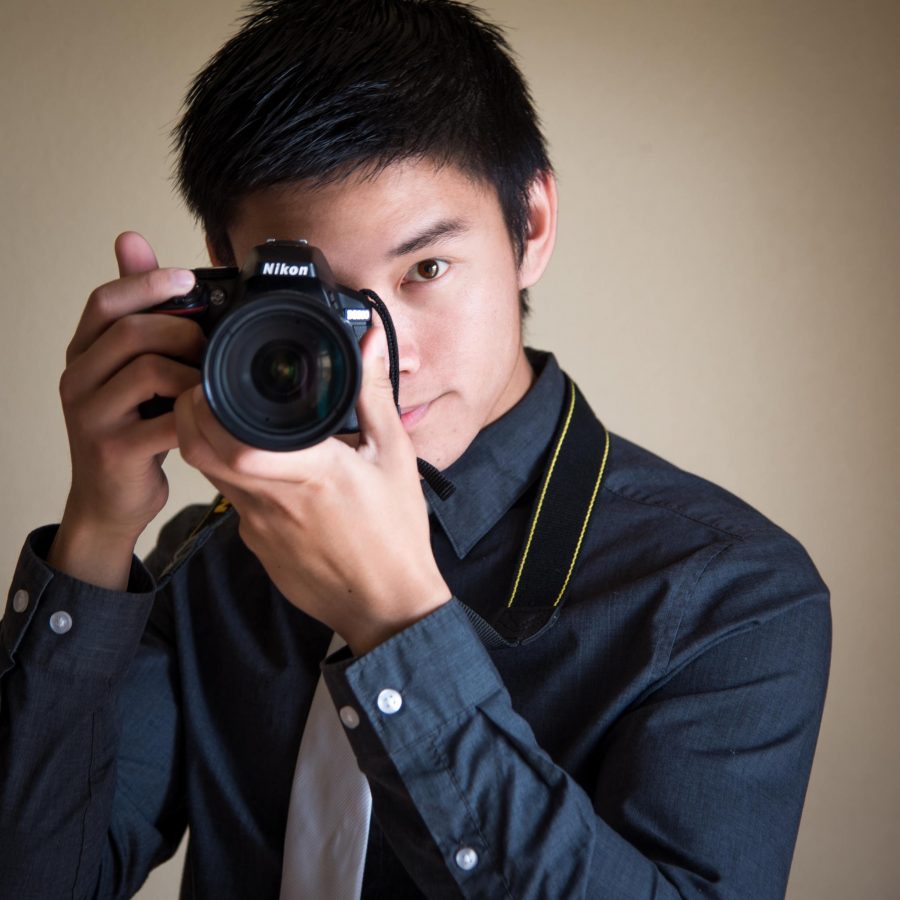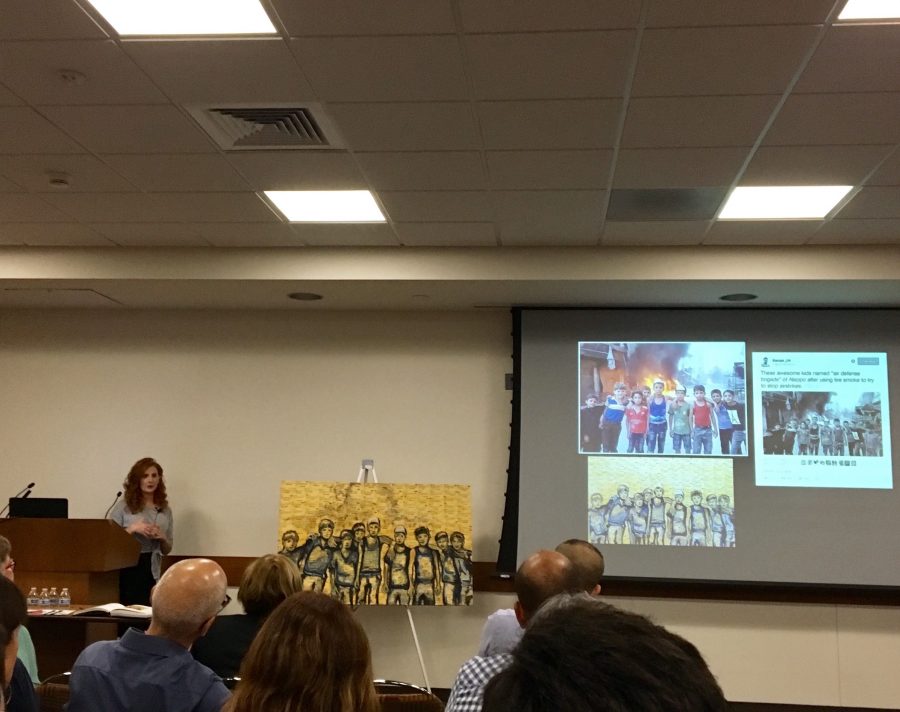Before getting started, it should be noted that spoilers abound from here on out. Seriously, if you haven’t finished “BioShock Infinite,” get out of here. Go read a book. Turn the page. There’s probably some opinion piece about the environment, sex offenders or education on Page 4. Read that instead. Whatever you do, don’t read this unless you’ve (a) finished “BioShock Infinite” and are ready to talk about the ending, (b) already had it spoiled for you and just want to join the conversation or (c) just don’t care about the whole deal and have had it with reading the rest of this issue.
Maybe I’m late to the party, but I finally finished “BioShock Infinite.” I’m writing this piece Tuesday evening, having finished the game Monday evening. At this point, I’ve had 24 hours to process the game and really think about the ending and its implications.
Oh, and read, watch and absorb every piece of the conversation on the Internet about it.
I would like to present my take on the ending after a bit of research and intense discussion (mostly with Opinion Editor Leo Castaneda).
While the original “BioShock” pulls the rug out from under you around three-quarters of the way into the game, “Infinite” saves its mega-twist until the very end. After rescuing Elizabeth, killing Zachary Hale Comstock and watching the flying city of Columbia fall to the rebel group Vox Populi, main character Booker DeWitt is transported via an interdimensional tear to the city of Rapture, the setting of the first two “BioShock” games. Elizabeth, who opened the tear, explains the city is a “doorway” and takes Booker to the surface, and more specifically, to the lighthouse from the very beginning of the first “BioShock.”
Elizabeth explains that what appear to be stars in the sky are actually other lighthouses, which lead to other cities and therefore, other dimensions with similar, though slightly different, timelines. She explains that there are always three constants within each door: A man, a city and a lighthouse. Additionally, there are other similar variables.
Even when comparing the first “BioShock” with “Infinite,” parallels can be drawn. There’s the obvious Andrew Ryan/Comstock connection, the Jack/Booker connections, in addition to the reoccurring importance of the lighthouses at the start of the tale. The smaller connections include the little sisters and Elizabeth, Rapture’s Plasmids and ADAM to Columbia’s salts and Vigors, and it’s even alluded to in “Infinite” through one of the voxaphones scattered throughout the world that the Big Daddies from “BioShock” were the inspiration for Songbird, even though they technically appear at a later date on a linear timeline.
After learning that there is an infinite number of these universes—all sharing a Joseph Campbell-esque monomyth-like structure—we finally learn who Booker, the Lutece siblings and Elizabeth actually are.
So, this is where things get weird—if they weren’t already. Booker took part in the 1890 Battle of Wounded Knee and was haunted by it. Soon after that, Booker is at a crossroads as he is about to be baptized in the river. This is where things split. Based on his decision to be baptized or not, there are multiple Bookers in multiple universes.
In some universes, Booker chooses to accept the baptism and undergoes a religious conversion. In this conversion, he chooses a new name, Zachary Hale Comstock, and ultimately goes on to found Columbia with the help of the Rosalind Lutece.
However, there is a second Booker who refuses the baptism and essentially becomes the game’s protagonist. Weird, right? You might be asking at this point, “Well, how can they meet if they’re the same person?”
It comes down to the Lutece “siblings.” (I say siblings, but they’re actually the same person from different universes.) They aid Comstock in quasi-kidnapping non-baptized Booker’s daughter Anna, who they rename Elizabeth, take her into their universe and groom her to be leader of Columbia. Robert Lutece sees the danger in this and urges Rosalind to send Elizabeth (also known as Anna DeWitt) back to her home universe. Comstock finds out and attempts to have both of them killed by sabotaging the machine they use to open tears. However, it doesn’t work, and they’re essentially placed outside of the time stream, free to exist wherever and whenever they choose. So, in an effort to get rid of Comstock, they recruit the non-baptized Booker from another universe to kill him. This explains how someone who was at Wounded Knee (1890) at age 20 could still be only in presumably his late 20s or early 30s in 1912, when the story takes place. He’s from an alternate universe—duh.
It’s hinted that this process has occurred many times, much like the ending of Stephen King’s “The Dark Tower” series.
This finally begs the question: What are we left with at the end, and what does it mean? One of the last images we see numerous Elizabeths about to drown Booker as he is about to either accept or refuse the baptism in this pivotal point in his life. Once he is drowned, both Comstock and Columbia are gone from all timelines, as well as the Booker who rejected the baptism.
In a scene after the credits, we see Booker awaken at his desk to the sound of a baby’s mobile. He calls softly, “Anna?” as if his daughter is in the other room. In a totally “Inception”—style ending, he opens the door to look, though it fades to black before we can see if she’s there or not.
Now, I’m assuming—and this is totally my theory, so feel free to prove me wrong here—that by drowning Booker mid-baptism, a third Booker timeline was created. Before, there was merely the binary of “does” or “does not” in his accepting of the baptism. Now, there is a third who never chose. I feel as though it’s hinted in the closest thing the game has to a theme song, the 1907 hymn, “Will the Circle Be Unbroken?” The developers were particularly crafty in hiding some spoilers in a song written more than a hundred years before the development of this game.
Really though, this opens up a whole realm of possibilities (you could even say, infinite) that I can’t wait to see Irrational Games explore.
If this whole ordeal sounds incredibly complicated and heady, it’s because it is. “BioShock Infinite” is a game that asks a lot of its players. I haven’t even touched on the game’s themes of race, class and religion. While this sounds like a wild mess, one thing is abundantly clear: “BioShock Infinite” is a game people will be talking about for years to come.
Oh, and if I got anything wrong or you have you own opinion, let me know. Send an email to entertainment@thedailyaztec.com; I’d love to hear many more takes on this brilliant work of modern fiction.






